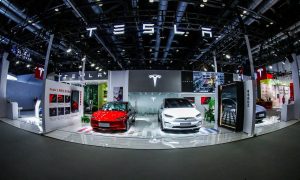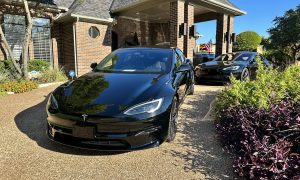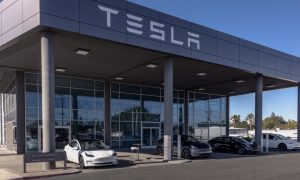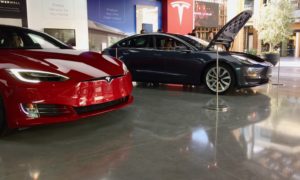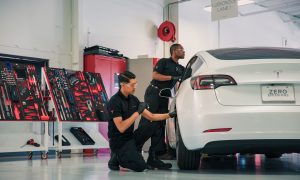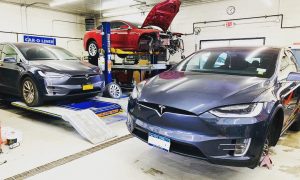News
Scaling Tesla Service Centers with Production
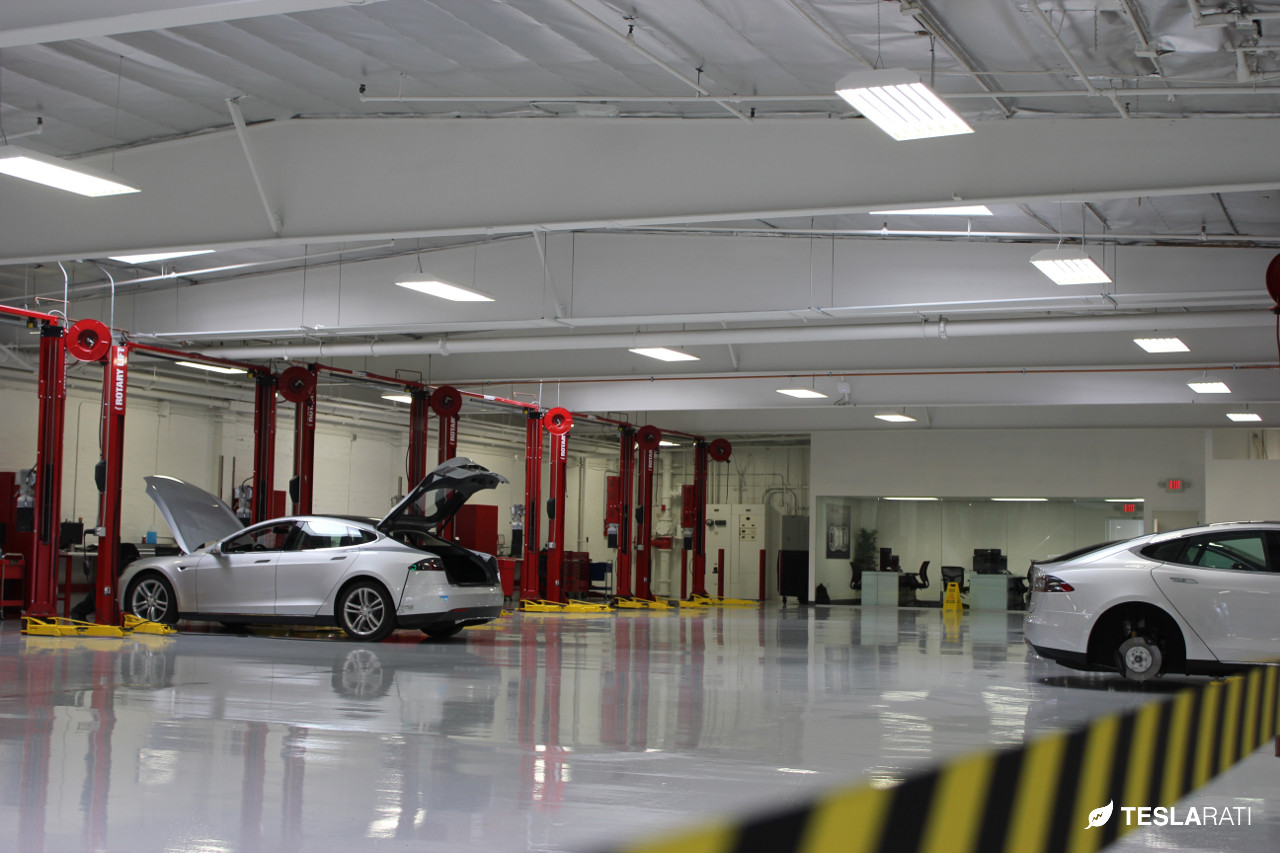
In a high tech startup, small or large, the effectiveness in which the business can scale is crucial to its success. Tesla has been known for its world class customer service, which it undoubtedly has, but recent experiences with replacing a Tesla 12V battery here in New England has me asking the question, can Tesla service scale at a rate to match its production?
The Early Days
Tesla service centers are going above and beyond when it comes to customer service. Some of this is to account for early design and quality challenges with the Model S, but also to make up for the limited number of service centers that are available. Either way, Tesla has done a stellar job with customer satisfaction up until this point. For the second year in a row Tesla has topped Consumer Reports satisfaction index.
But as new Model S owners continue to hear about Tesla’s world-class customer service by word of mouth and through mass media, the expectations are set to an extremely high level that service centers will need to deliver against. As Tesla Motors continues to focus its efforts on production and scaling the Supercharger network, they’ll need to ensure that Service Centers scale at a rate to match the growing customer base.
My Tesla Service Center Experiences
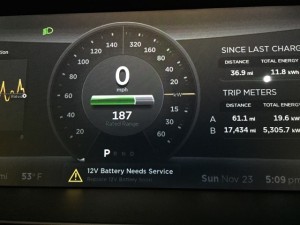 There hasn’t been much to service on my Model S other than a tire rotation thanks to the marvels of its simple design. However, my experiences in dealing with a busy Tesla Service Center led me to believe that they’d rather I have went somewhere else for the tire rotation than to have it performed at their facility.
There hasn’t been much to service on my Model S other than a tire rotation thanks to the marvels of its simple design. However, my experiences in dealing with a busy Tesla Service Center led me to believe that they’d rather I have went somewhere else for the tire rotation than to have it performed at their facility.
Generally when I need to take my ICE cars in for service the most I have to wait is 1-2 days. My most recent experience with fixing 12V battery issue through the Tesla Service Center here in New England took nearly 2 weeks. Admittedly, some of that was due to poor weather and a holiday in between but there were still seven business days where the service center was too overloaded to get me in within the usual 1-2 days.
From talking to other Tesla owners it sounds like service experiences can be a mixed bag of results depending on where you live. One Model S owner based out of California, reported a similar issue with the 12V battery but managed to receive a call back within 15 minutes and later booked for service the following day. As for me? It took several phone calls, two emails and almost an entire business day gone before I was able to get schedule an appointment. The actual service that the Tesla technicians performed was excellent, but the scheduling process was abysmal.
- A Norwegian Tesla ownership experience
- Tesla LA Club unveils Los Angeles’ largest Tesla Service Center
When the day of service finally arrived, I told the Tesla technician that it was fine to pick up the Model S from my work place and bring it back that same day since they didn’t have a loaner available. The technician arrived by Uber promptly at 10:30am, jotted down some notes and then drove away in my car. The service department had promised to have it back by 3:30pm but in reality I got the vehicle back at 7pm. Fortunately I had no other plans that evening.
Scaling Tesla Service Centers
There was one Tesla Service Center serving all points north of Connecticut on the East Coast at the time when I purchase my Model S. The local Tesla Store had mentioned that they sold nine hundred Model S’ in this area alone and this was over a half a year ago. Today there is still only a single service center supporting the entire area but with many more Teslas on the road.
A second Tesla Service Center is planned for Dedham, MA but is not online yet. What I find interesting is the fact that both service centers are geographically close to one another which doesn’t seem to make a lot of sense to me.
This is a lot of area to cover for a single or even two service centers. Given the distances involved in covering such a large area, the technicians are running all over New England to pick up or service cars which just doesn’t scale well.
Summary
I believe that Tesla has fallen behind in scaling its service centers supporting the Model S roll out, at least when it comes to the New England area and likely overseas. It’ll be crucial for Tesla to start keeping a closer eye on service center response times and volume of service, if not already.
In addition to monitoring real-time growth of the Supercharging network Tesla owners should also be watching the rate in which Tesla Service Centers are being deployed.
Elon Musk
Elon Musk confirms Grok 4 launch on July 9 with livestream event
The rollout will be accompanied by a livestream at 8 p.m. Pacific Time.
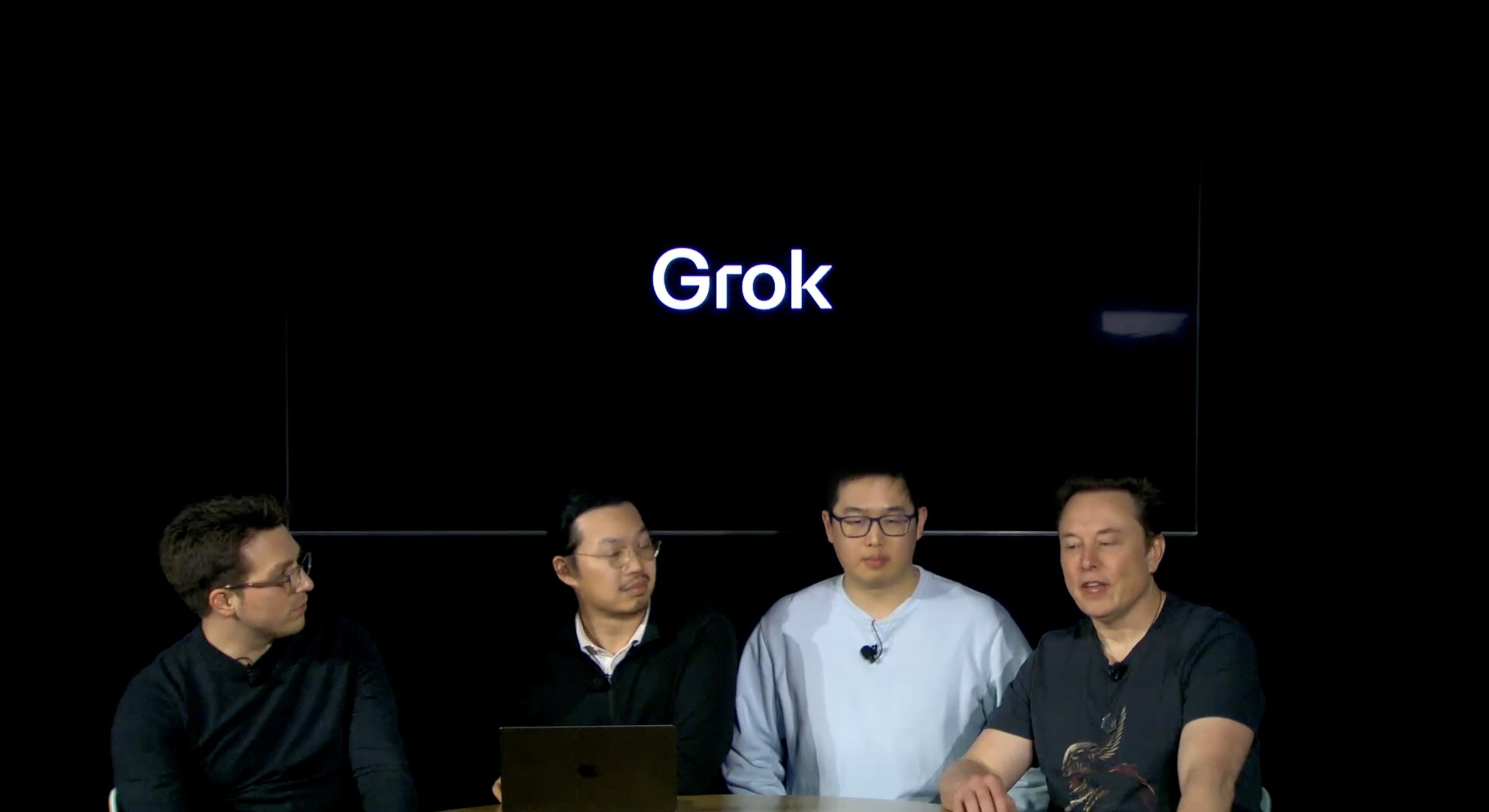
Elon Musk has officially confirmed that Grok 4, the latest version of xAI’s large language model, will launch on July 9. The rollout will be accompanied by a livestream at 8 p.m. Pacific Time, hosted on xAI’s official account on X.
xAI goes straight to Grok 4
Back in May, leaks indicated that xAI was getting ready to ship Grok 3.5. Considering Musk’s recent comments, however, it appears that the artificial intelligence startup would be focusing on the large language model’s fourth iteration instead. As noted in a Financial Express report, users on X have sighted references to Grok 4 in the lead up to the update’s launch, such as “grok-4-prod-mimic” and “Grok 4 Code.”
Musk’s Grok 4 announcement comes as AI competition intensifies between major players including OpenAI, Google, and xAI. With Musk’s Colossus supercomputer fully operational in Memphis, xAI appears to be accelerating its AI product roadmap.
Musk pushes Grok toward political neutrality
Grok 4’s launch also follows a recent controversy involving political bias, as noted in a CNN report. Last week, Grok responded to a user on X stating that political violence in the U.S. since 2016 had come more from the political right than the left. The chatbot noted in a later reply that its answer was based on information from sources like Reuters, the Journal of Democracy, and University of Maryland studies.
Musk stated that Grok’s response was a “major fail.” “Major fail, as this is objectively false. Grok is parroting legacy media. Working on it,” he wrote in a post on X. By the end of June, Musk noted that he was “grinding all night with the xAI team” and that they were making “good progress.” He also stated that the model “Will be called Grok 4. Release just after July 4th. Needs one more big run for a specialized coding model.”
News
Tesla opens massive solar Supercharger station in California
The Supercharger opened to customers ahead of Fourth of July weekend, while Tesla continues phase two of construction on the site.
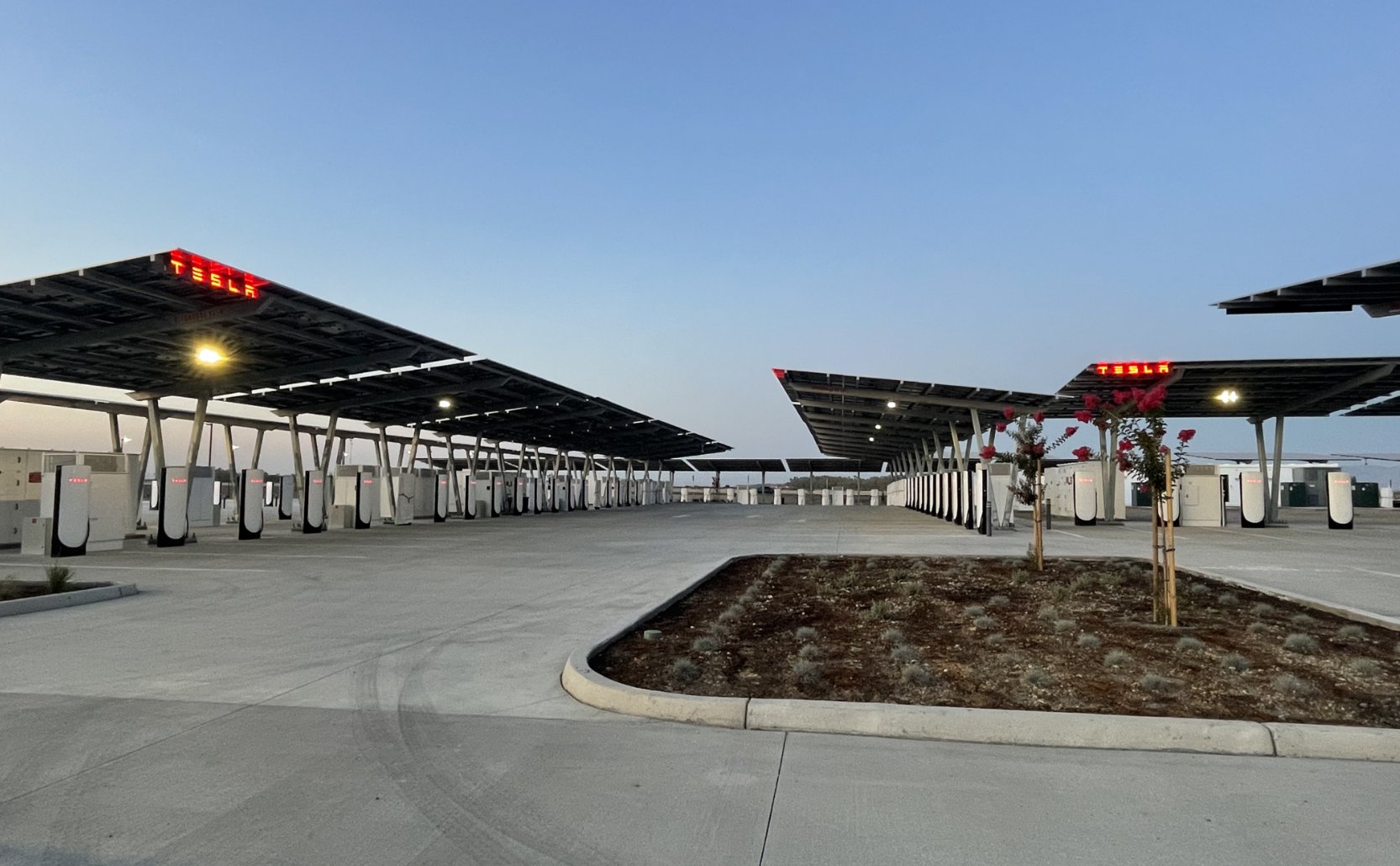
Tesla has officially launched the first several Supercharging posts at a massive station in California, notably including solar canopies and grid-scale batteries to offer completely renewable charging.
Last week, Tesla announced on X that it opened the first 84 Supercharger stalls of a planned 168-stall station in Lost Hills, California. Additionally, the massive Supercharger project features 11MW of solar canopies and 10 Megapack batteries for off-grid charging powered entirely by solar energy.
Tesla completed the first phase of the project just days ahead of the busy Fourth of July holiday weekend, adding that initial construction took just eight months. In addition to the remaining charging stalls, Tesla says it’s building a set of lounge areas, renderings of which can be seen below alongside current photos of the site.
Notably, the site also includes V4 charging posts for the company’s latest available charging speeds, and it’s located near the busy junction between I-5 and Highway 46 in Kern County.
“Thank you [Kern County] and [PG&E] for collaboration and approvals,” Tesla wrote in a follow-up post.
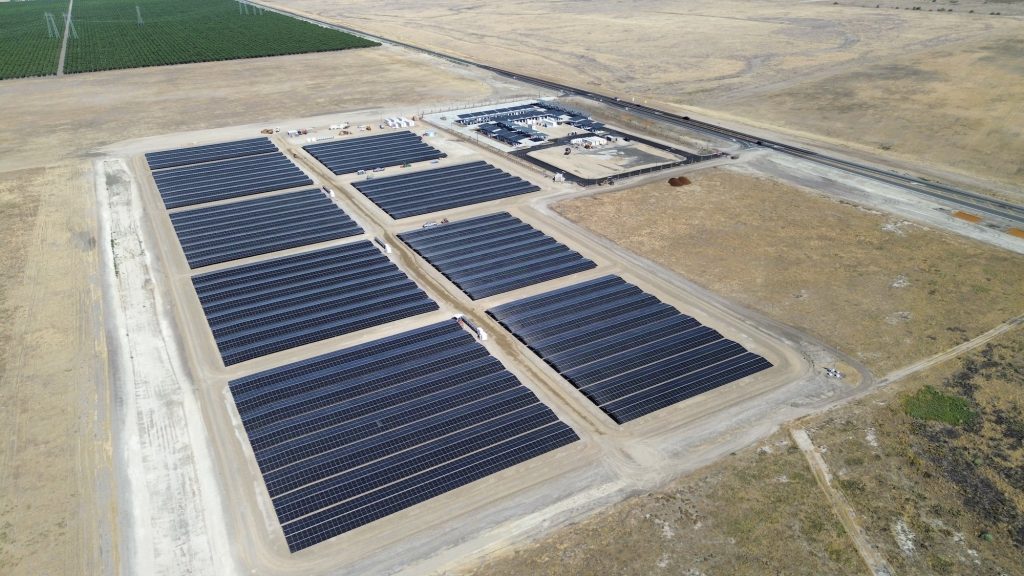
Credit: Tesla Charging | X

Credit: Tesla Charging | X

Credit: Tesla Charging | X
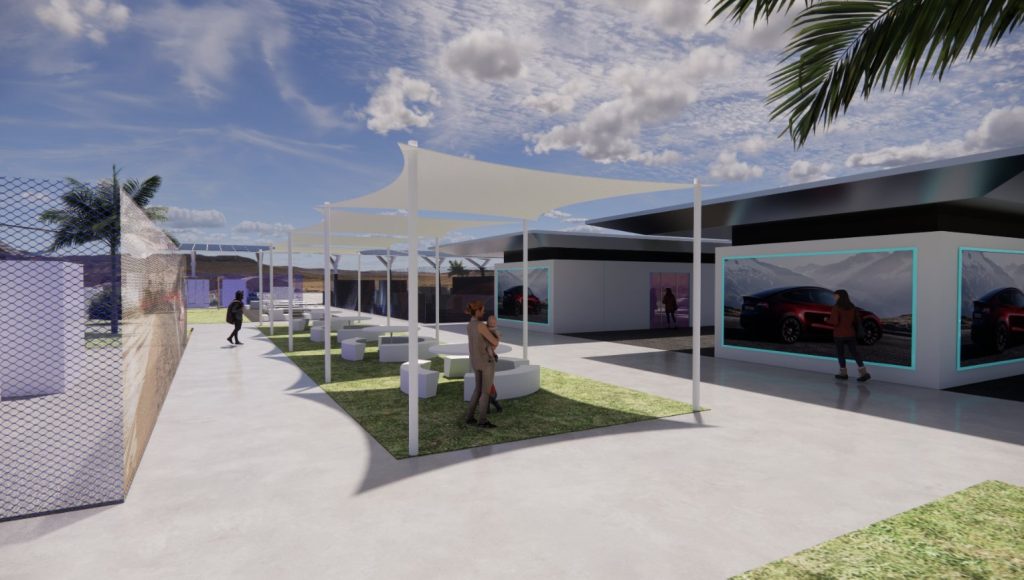
Credit: Tesla Charging | X
Tesla Supercharger Maps for North America, Europe, and Asia pic.twitter.com/0U5r0XRPyo
— TESLARATI (@Teslarati) July 2, 2025
READ MORE ON TESLA SUPERCHARGERS: Tesla launches ultra-fast V4 Superchargers in China for the first time
Testing at the LA Diner, plus Musk update on potential Tesla solar Gigafactory
The huge Tesla Supercharger station completed phase one of construction fairly quickly, especially given how long Tesla has been working on its unique Los Angeles diner, drive-in, and Supercharger location. Still, the company was seen performing some testing at the nearly-completed charging station earlier this month, and will reportedly be holding a job fair.
Elon Musk also responded on Monday morning to a post on X, suggesting that Tesla is “thinking about” building a U.S.-based solar Gigafactory in order to help support increased power needs with AI growth, and to bolster domestic solar production.
Tesla is building a new UFO-inspired Supercharger in the heart of Alien country
News
Tesla driver walks away from major accident with minor injuries
The driver sustained only minor injuries, and the exact cause of the crash remains under investigation.
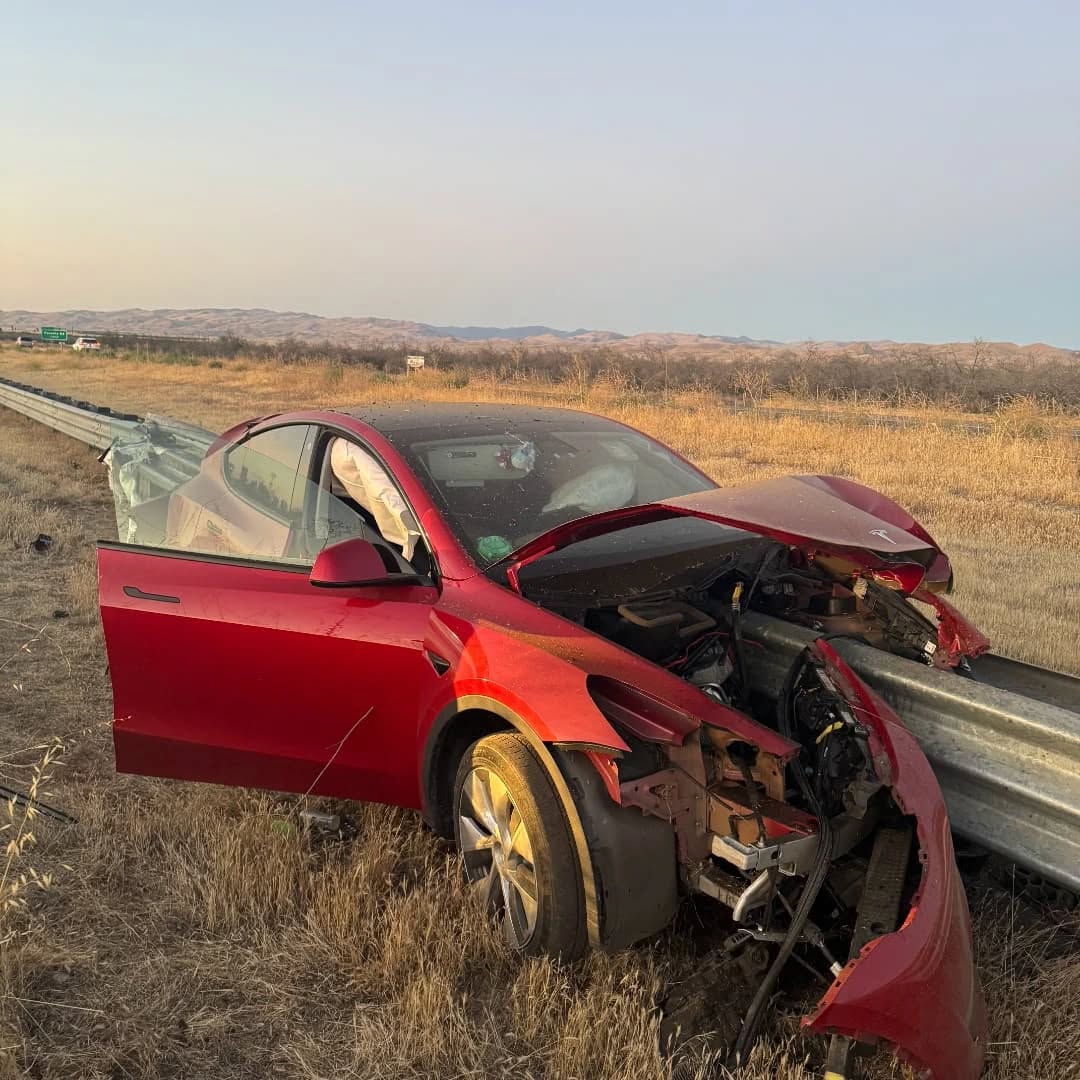
The driver of a Tesla Model Y survived and walked away from a harrowing accident on Monday in California, only sustaining minor injuries despite the vehicle being impaled by a guardrail.
On Monday morning around 4:34 a.m., the Los Banos division of the California Highway Patrol (CHP) responded to the accident on I-5 near Panoche Road, involving a 23-year-old in a Tesla Model Y. According to a post on social media, the driver veered off the road for unknown reasons in the northbound lane, before crashing directly into the guardrail and impaling the vehicle.
You can read the full message and photos from Los Banos CHP below, as were shared in a Facebook post on Monday afternoon.
This morning a Tesla model y was traveling in the #1 northbound lane of I-5 north of Panoche Rd. For unknown reasons driver allowed V-1 to veer off the roadway, travel through a dirt center divide, and crashed into the fixed metal guardrail. Lucky for the driver he only sustained minor injuries and was able to walk away. Driving a vehicle requires 100% attention to the road. Avoid distractions and focus on driving.
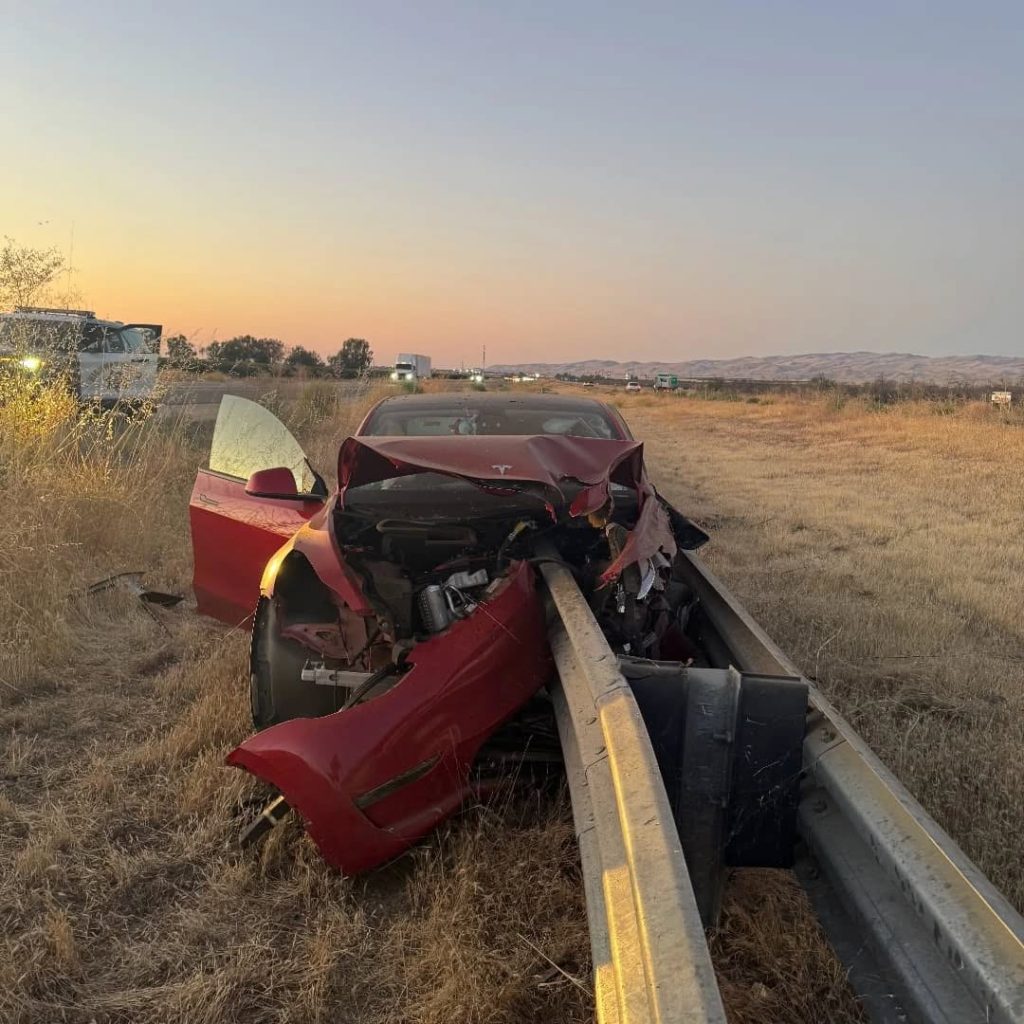
Credit: CHP Los Banos (via Facebook)
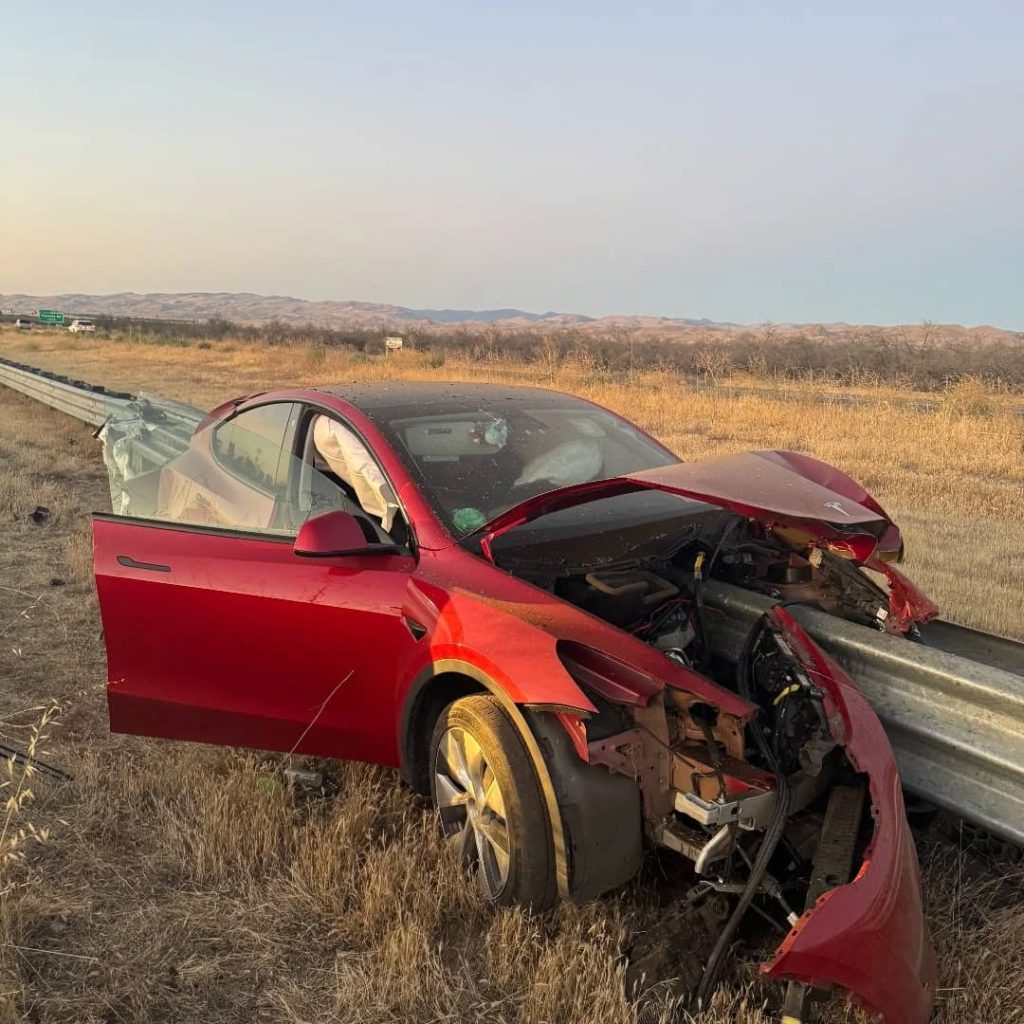
Credit: CHP Los Banos (via Facebook)
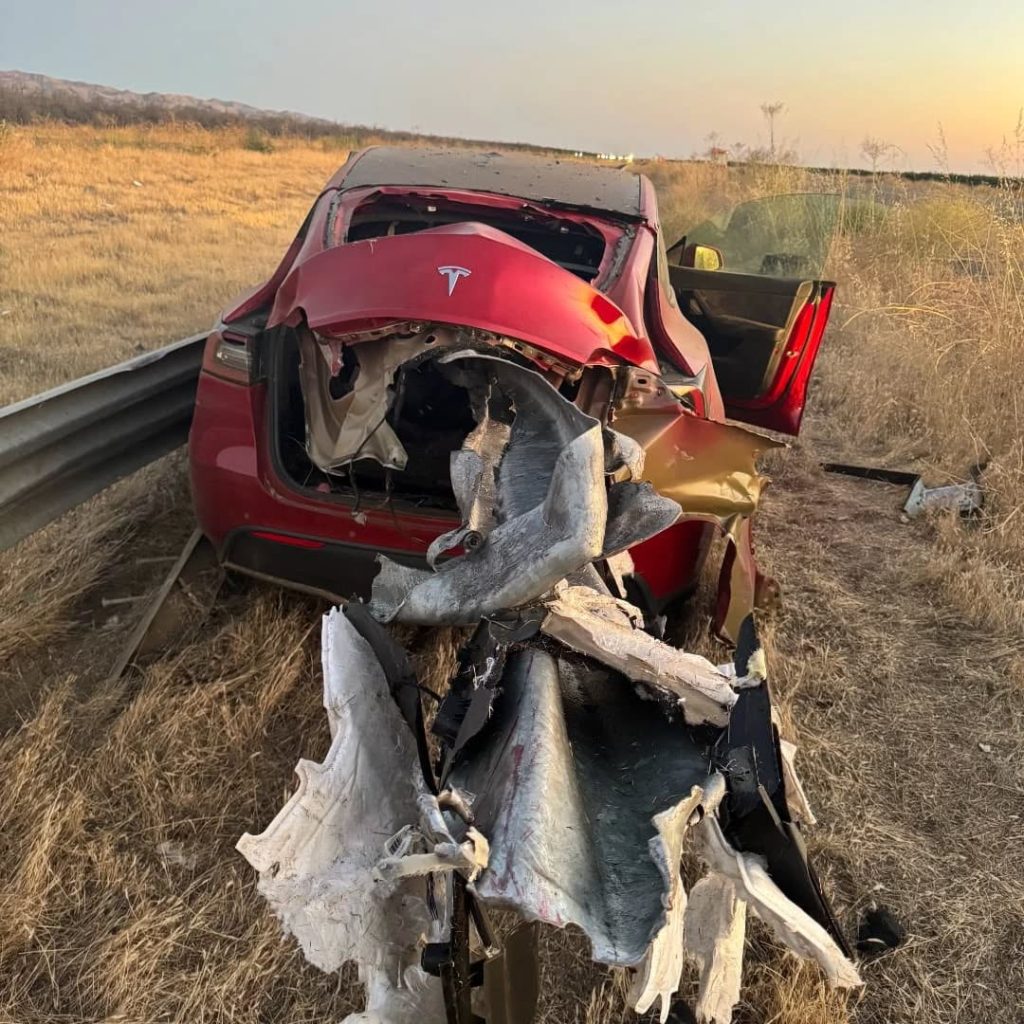
Credit: CHP Los Banos (via Facebook)
In a statement to SFGate, CHP officer Myles Anderson said that the driver only sustained minor injuries, while no arrests are made and drugs and alcohol are not suspected to have been involved. The report also notes that Tesla’s “cruise control and lane assistance features” were activated, according to Anderson. However, it’s not entirely clear if this is referring to Supervised Full Self-Driving (FSD), or to the cruise control and lane assist features baked into Autopilot.
At the time of writing, CHP has not yet responded to Teslarati’s request for clarification and additional details on the matter.
Tesla Crash Safety Ratings across its lineup: pic.twitter.com/ny30R7ceji
— TESLARATI (@Teslarati) July 1, 2025
READ MORE ON TESLA SAFETY: Tesla rolls out crucial new safety feature aimed at saving children
The news comes after Tesla has touted its vehicles as incredibly safe for many years. In December, for example, the company highlighted receiving top safety scores from regulators on four different continents throughout the world, including from the National Highway Traffic Safety Administration (NHTSA) and the Insurance Institute of Highway Safety (IIHS) in the U.S.
Tesla has also listed the goal of making its vehicles the safest on the road throughout the years, both in the overall design of its vehicles and in its Autopilot and Full Self-Driving (FSD) programs.
Tesla Model 3 ranks as the safest new car in Europe for 2025, per Euro NCAP tests
-

 Elon Musk1 week ago
Elon Musk1 week agoTesla investors will be shocked by Jim Cramer’s latest assessment
-

 News2 weeks ago
News2 weeks agoTesla Robotaxi’s biggest challenge seems to be this one thing
-

 News2 weeks ago
News2 weeks agoWatch the first true Tesla Robotaxi intervention by safety monitor
-

 Elon Musk2 weeks ago
Elon Musk2 weeks agoA Tesla just delivered itself to a customer autonomously, Elon Musk confirms
-

 News2 weeks ago
News2 weeks agoTesla Robotaxi rollout proves that Elon Musk still delivers, even if it’s late
-

 Elon Musk2 weeks ago
Elon Musk2 weeks agoxAI welcomes Memphis pollution results, environmental groups push back
-
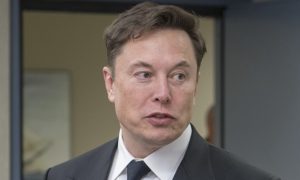
 Elon Musk2 weeks ago
Elon Musk2 weeks agoElon Musk commends Tesla team on successful Robotaxi launch
-
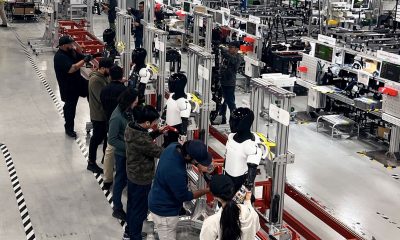
 Elon Musk2 weeks ago
Elon Musk2 weeks agoElon Musk confirms Tesla Optimus V3 already uses Grok voice AI



